Premium Only Content
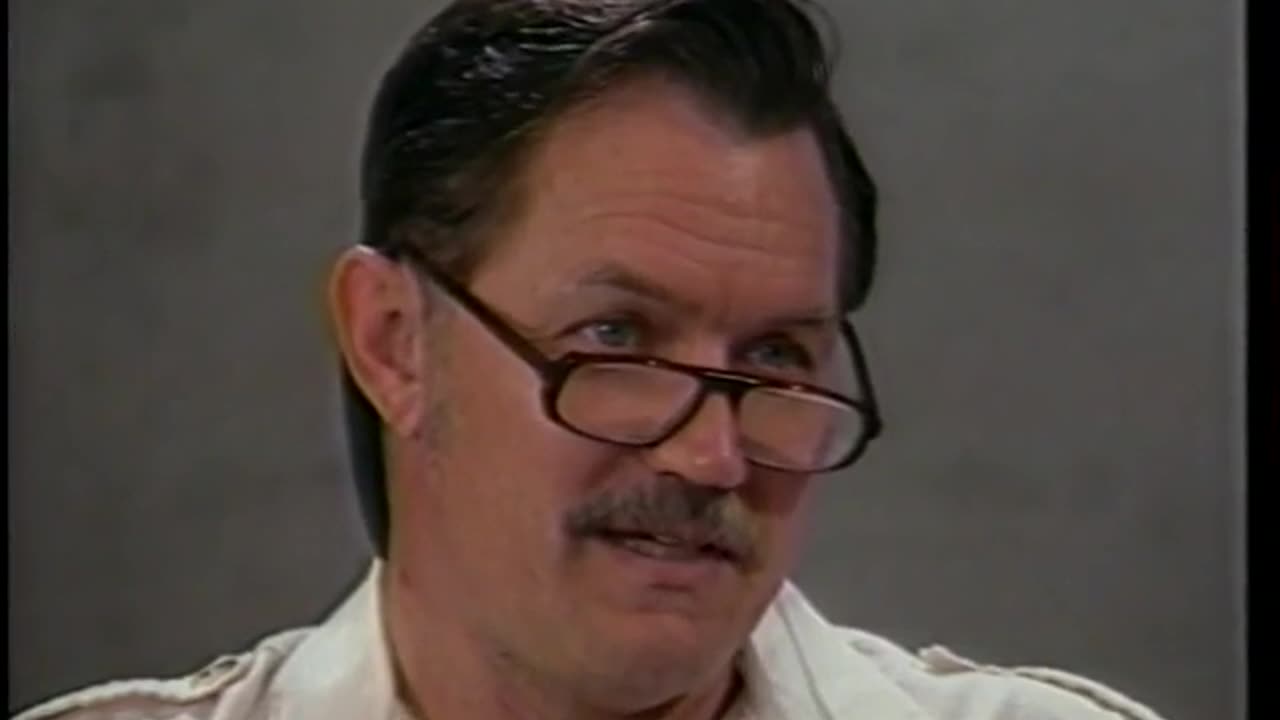
The Dark Alliance: The Global Narcotics Trade and its Connection to Government and Organized Crime
More Stockwell videos: https://patreon.com/thememoryhole_
In this comprehensive and eye-opening video, former CIA official John Stockwell delves deep into the history, structure, and operation of the global narcotics trade. He traces the origins of this illicit business back to the Opium Wars in China and explains how the American government aided the Mafia and other crime syndicates in the production and distribution of drugs during and after World War II.
Stockwell also sheds light on the French involvement in narcotics in Indo-China and the US assumption of this operation during the Vietnam War. He goes on to reveal how the CIA and international banks have played a pivotal role in fostering and profiting from the current worldwide drug operations. The video emphasizes the narcotics operations of George Bush and Oliver North, and their involvement in the Iran-Contra affair.
Throughout the presentation, Stockwell provides insightful analysis and commentary on the inner workings of the narcotics trade and the complex web of relationships between government agencies, organized crime, and financial institutions. He exposes the extent to which this trade is driven by profit and geopolitical agendas, rather than concern for the health and well-being of people around the world.
This video is a must-watch for anyone interested in understanding the true nature of the global narcotics trade and its impact on society. It is a sobering reminder of the dangers posed by unchecked greed and the need for greater transparency and accountability in government and financial institutions.
The United States Central Intelligence Agency (CIA) has been accused of involvement in drug trafficking. Books and investigations on the subject that have received general notice include works by the historian Alfred McCoy, professor and diplomat Peter Dale Scott, journalists Gary Webb and Alexander Cockburn, and writer Larry Collins. These claims have led to investigations by the United States government, including hearings and reports by the United States House of Representatives, Senate, Department of Justice, and the CIA's Inspector General.
Background
According to Tim Weiner, the Central Intelligence Agency "has been accused of forming alliances of convenience with drug traffickers around the world in the name of anti-Communism" since its creation in 1947.[1]
In the early 1970s, Alfred McCoy "accused American officials of condoning and even cooperating with corrupt elements in Southeast Asia's illegal drug trade out of political and military considerations"[2] and stated that the CIA was knowingly involved in the production of heroin in the Golden Triangle of Burma, Thailand, and Laos.[3] The United States Department of State responded to the initial allegations stating that they were "unable to find any evidence to substantiate them, much less proof."[2] Subsequent investigations by the Inspector General of the CIA,[4] United States House Committee on Foreign Affairs,[5] and United States Senate Select Committee to Study Governmental Operations with Respect to Intelligence Activities (i.e. the Church Committee)[6] also found the charges to be unsubstantiated.
In the 1980s, American journalists Anthony Avirgan and Martha Honey claimed that the perpetrator of the La Penca bombing was linked to a drug-financed "Secret Team" of FDN Contras and CIA agents.[7] The Christic Institute then filed a $24 million civil suit on behalf of Avirgan and Honey 30 charging defendants — including CIA officials — of illegally participating in assassinations, as well as arms and drug trafficking.[8][9][10] A judge for the United States District Court for the Southern District of Florida found that the plaintiffs "made no showing of existence of genuine issues of material fact" and ordered the Christic Institute to pay over $1 million in attorneys fees and court costs.[8] The United States Court of Appeals for the Eleventh Circuit affirmed the ruling, and the Supreme Court of the United States let the judgment stand by refusing to hear an additional appeal.[10][11]
In August 1996, Gary Webb's three-part series of articles titled Dark Alliance was published by the San Jose Mercury News.[12] Webb's series raised allegations that U.S. government officials — including Central Intelligence Agency (CIA) and Department of Justice (DOJ) employees — either ignored or protected drug dealers in Southern California who were associated with the Nicaraguan Contras.[13] Investigation by the United States Department of Justice Office of the Inspector General, Central Intelligence Agency Office of Inspector General, and United States House Permanent Select Committee on Intelligence rejected the main charges.
France
Illegal labs producing heroin were first discovered near Marseille, France, in 1937. These labs were run by Corsican gang leader Paul Carbone. For years, the Corsican underworld had been involved in the manufacturing and trafficking of heroin, primarily to the United States. It was this heroin network that eventually became known as "the French Connection". The Corsican Gang was protected by the CIA and the SDECE after World War II in exchange for working to prevent French Communists from bringing the Old Port of Marseille under their control.[14]
Golden Triangle (Southeast Asia)
During the Korean War, the first allegations of CIA drug trafficking surfaced after 1949, stemming from a deal whereby arms were supplied to Chiang Kai-shek's defeated generals in exchange for intelligence.[15] Later in the same region, while the CIA was sponsoring a "Secret War" in Laos from 1961 to 1975, it was openly accused of trafficking heroin in the Golden Triangle area.
To fight its "Secret War" against the Pathet Lao communist movement of Laos, the CIA used the Miao/Meo (Hmong) population. Because of the war, the Hmong depended upon opium poppy cultivation for hard currency. The Plain of Jars had been captured by Pathet Lao fighters in 1964, which resulted in the Royal Lao Air Force being unable to land its C-47 transport aircraft on the Plain of Jars for opium transport. The Royal Laotian Air Force had almost no light planes that could land on the dirt runways near the mountaintop poppy fields. Having no way to transport their opium, the Hmong were faced with economic ruin. Air America, a CIA front organization, was the only airline available in northern Laos. Alfred McCoy writes, "According to several unproven sources, Air America began flying opium from mountain villages north and east of the Plain of Jars to CIA asset Hmong General Vang Pao's headquarters at Long Tieng."[16]
The CIA's front company, Air America was alleged to have profited from transporting opium and heroin on behalf of Hmong leader Vang Pao,[17][18] or of "turning a blind eye" to the Laotian military doing it.[19][20] This allegation has been supported also by former Laos CIA paramilitary Anthony Poshepny (aka Tony Poe), former Air America pilots, and other people involved in the war. It is portrayed in the movie Air America. Larry Collins alleged:
During the Vietnam War, US operations in Laos were largely a CIA responsibility. The CIA's surrogate there was a Laotian general, Vang Pao, who commanded Military Region 2 in northern Laos. He enlisted 30,000 Hmong tribesmen in the service of the CIA. These tribesmen continued to grow, as they had for generations, the opium poppy. Before long, someone—there were unproven allegations that it was a Mafia family from Florida—had established a heroin drug refinery lab in Region Two. The lab's production was soon being ferried out on the planes of the CIA's front airline, Air America. A pair of BNDD [the predecessor of the US Drug Enforcement Administration] agents tried to seize an Air America."[15]
Further documentation of CIA-connected Laotian opium trade was provided by Rolling Stone magazine in 1968, and by Alfred McCoy in 1972.[21][17] McCoy stated that:
In most cases, the CIA's role involved various forms of complicity, tolerance or studied ignorance about the trade, not any direct culpability in the actual trafficking ... [t]he CIA did not handle heroin, but it did provide its drug lord allies with transport, arms, and political protection. In sum, the CIA's role in the Southeast Asian heroin trade involved indirect complicity rather than direct culpability.[22]
However, aviation historian William M. Leary, writes that Air America was not involved in the drug trade, citing Joseph Westermeyer, a physician and public health worker resident in Laos from 1965 to 1975, that "American-owned airlines never knowingly transported opium in or out of Laos, nor did their American pilots ever profit from its transport."[23] Aviation historian Curtis Peebles also denies that Air America employees were involved in opium transportation.[24]
CIA response
Following a 2009 FOIA request, the 2006 document "Undercover Armies: CIA and Surrogate Warfare in Laos" was released.[25] Former CIA Operations Officer in Vietnam and CIA historian Thomas Ahern wrote, drawing from his own recollection, that local tribesmen being trained by the CIA were prohibited from carrying opium on U.S. chartered flights. Only large packages were inspected, so that small amounts of opium for local consumption might have been carried by individuals, but the prohibition of commercial traffic was unequivocal.[25]
United States
During a PBS Frontline investigation, DEA field agent Hector Berrellez said, "I believe that elements working for the CIA were involved in bringing drugs into the country."
"I know specifically that some of the CIA contract workers, meaning some of the pilots, in fact were bringing drugs into the U.S. and landing some of these drugs in government military air bases. And I know so because I was told by some of these pilots that in fact they had done that."[26]
Several journalists assert that the CIA used Mena Intermountain Municipal Airport in Arkansas to smuggle weapons and ammunition to the Contras in Nicaragua, and drugs back into the United States.[27][28] Some theories even invoke the involvement of political figures, including Oliver North, then vice president and former CIA director George H. W. Bush and then Arkansas governor Bill Clinton.[28][29]
The CIA's self-investigation, overseen by the CIA's inspector general, stated that the CIA had no involvement in or knowledge of any illegal activities that may have occurred in Mena. The report said that the agency had conducted a training exercise at the airport in partnership with another Federal agency and that companies located at the airport had performed "routine aviation-related services on equipment owned by the CIA".[30]
Nicaragua
Main article: CIA involvement in Contra cocaine trafficking
In 1986, the United States Senate Committee on Foreign Relations began investigating drug trafficking from Central and South America and the Caribbean to the United States. The investigation was conducted by the Sub-Committee on Terrorism, Narcotics, and International Operations, chaired by Senator John Kerry, so its final 1989 report was known as the Kerry Committee report. The Report concluded that "it is clear that individuals who provided support for the Contras were involved in drug trafficking, the supply network of the Contras was used by drug trafficking organizations, and elements of the Contras themselves knowingly received financial and material assistance from drug traffickers."[31]
In 1996, Gary Webb wrote a series of articles published in the San Jose Mercury News, which investigated Nicaraguans linked to the CIA-backed Contras who had smuggled cocaine into the U.S. which was then distributed as crack cocaine into Los Angeles and funneled profits to the Contras. His articles asserted that the CIA was aware of the cocaine transactions and the large shipments of drugs into the U.S. by the Contra personnel and directly aided drug dealers to raise money for the Contras. The Los Angeles Times, The New York Times, and The Washington Post launched their own investigations and rejected Webb's allegations.[32] In May 1997, The Mercury News executive editor Jerry Ceppos, who had approved the series, published a column that acknowledged shortcomings in the series reporting, editing, and production, while maintaining the story was correct "on many important points."[32] Webb later published a book based on the series, Dark Alliance: The CIA, the Contras, and the Crack Cocaine Explosion.[33] An internal CIA journal denounces continued support for Webb and echoing of his claims, saying one supporter "twists and misinterprets to conform to his preconceived notions."[34]
Mexico
See also: Mexican Drug War
In October 2013, an American television network alleged that CIA operatives were involved in the kidnapping and murder of DEA covert agent Enrique Camarena, because he was a threat to the agency's drug operations in Mexico in the 1980s. According to the network, this information was provided to them by multiple sources, specifically two former federal agents and an ex-CIA contractor. According to all three alleged sources the CIA was collaborating with drug traffickers bringing cocaine and marijuana into the United States, and using its share of the profits to finance the Contra rebels attempting to overthrow Nicaragua's Leftist Sandinista government. The CIA spokesman responding to the allegations called it "ridiculous" to suggest that the agency had anything to do with the murder of a US federal agent or the escape of his alleged killer.[35]
Honduras
The Honduran drug lord Juan Matta-Ballesteros was the owner of SETCO, an airline which the Nicaraguan Contras used to covertly transport military supplies and personnel in the early 1980s.[36] Writers such as Peter Dale Scott and Jonathan Marshall have suggested that the U.S. government's desire to conceal or protect these clandestine shipments led it to close the DEA office in Honduras when an investigation began into SETCO, allowing Matta-Ballesteros to continue and expand his trafficking.[37]
Panama
See also: Illegal drug trade in Panama
The U.S. invasion of Panama after which president Manuel Noriega was captured.
In 1989, the United States invaded Panama as part of Operation Just Cause, which involved 25,000 American troops. General Manuel Noriega, head of Panama's government, had been giving military assistance to Contra groups in Nicaragua at the request of the U.S.—which, in exchange, allowed him to continue his drug-trafficking activities—which they had known about since the 1960s.[38][39] When the DEA tried to indict Noriega in 1971, the CIA prevented them from doing so.[38] The CIA provided Noriega with hundreds of thousands of dollars per year as payment for his work in Latin America.[38] However, when CIA pilot Eugene Hasenfus was shot down over Nicaragua by the Sandinistas, documents aboard the plane revealed many of the CIA's activities in Latin America, and the CIA's connections with Noriega became a public relations "liability" for the U.S. government, which finally allowed the DEA to indict him for drug trafficking, after decades of allowing his drug operations to proceed unchecked.[38] Operation Just Cause, whose ostensible purpose was to capture Noriega, pushed the former Panamanian leader into the Papal Nuncio where he surrendered to U.S. authorities. His trial took place in Miami, where he was sentenced to 45 years in prison.[38]
Venezuela
See also: Illegal drug trade in Venezuela
In 1990, a failed CIA anti-drug operation in Venezuela resulted in at least a ton of cocaine being smuggled into the United States and sold on the streets. The incident, which was first made public in 1993, was part of a plan to assist an undercover agent to gain the confidence of a Colombian drug cartel. The plan involved the unsupervised shipment of hundreds of pounds of cocaine from Venezuela. The drug in the shipments was provided by the Venezuelan anti-drug unit which was working with the CIA, using cocaine seized in Venezuela. The shipments took place despite the objections of the U.S. DEA. When the failed plan came to light, the CIA officer in charge of the operation resigned, and his supervisor was transferred.[40] The CIA issued a statement on the incident saying there was "poor judgment and management on the part of several C.I.A. officers".[41]
In addition, the former Venezuelan anti-narcotics chief General Ramon Guillen Davila and his chief civilian aide were both indicted in connection with the shipments.[42] Because Venezuela does not extradite its citizens, Guillen was not tried in the U.S., but his civilian aide was arrested while in the United States and sentenced to 20 years.[43]
Afghanistan
[icon]
This section needs expansion. You can help by adding to it. (February 2010)
See also: Opium production in Afghanistan
Alfred McCoy has argued that the CIA had fostered heroin production in Afghanistan for decades to finance operations aimed at containing the spread of communism, and later to finance operations aimed at containing the spread of the Islamic state.[44] McCoy alleges that the CIA protects local warlords and incentivizes them to become drug lords. In his book "Politics of Heroin",[45] McCoy alleges CIA complicity in the global drug trade in Afghanistan, Southeast Asia, Central America, and Colombia, arguing that the CIA follows a similar pattern in all their drug involvement. McCoy has also written that during the 1980s "to fight the Soviet occupation of Afghanistan, the CIA, working through Pakistan's Inter-Services Intelligence, backed Afghan warlords who used the Agency's arms, logistics, and protection to become major drug lords."[46]
According to The New York Times, in 2006, the US Ambassador in Kabul, the CIA station chief and MI6/SIS's station chief met with Afghan President Hamid Karzai, to address allegations regarding his brother, Ahmed's involvement in the drug trade, hoping that he would agree to expel his brother from Afghanistan.[47] Before agreeing to take such action, Karzai demanded clear evidence of his brother's involvement be presented-evidence which the US and the UK were either unwilling or unable to provide.[47]
Then in October 2009, the New York Times published an article by Dexter Filkins, Mark Mazzetti, and James Risen who reported that unnamed former and current American officials had said Ahmed Wali Karzai had received regular payments from the CIA for eight years – starting shortly after his brother was elected President – and was involved in opium trafficking in Afghanistan.[48] Ahmed Wali Karzai denied the allegations stating that he had provided intelligence to the United States but was not compensated.[48] Mahmud Karzai told Gerald Posner: "This is being coordinated by the ISI (Pakistani intelligence service). They have been behind the assassinations of several provincial leaders who are against the Taliban. And my brother is the last major obstacle to them in the south. If they remove Ahmed Wali, the Taliban will fill the void."[49] A CIA spokesman said: "No intelligence organization worth the name would ever entertain these kind of allegations."[48] In an article for Washington Decoded, former CIA operations office Merle Pribbenow said, like claims leveled toward former South Vietnamese Lieutenant General Đặng Văn Quang, the allegations against Ahmed Wali Karzai appeared to be "vague rumors unsupported by solid evidence" and he cautioned readers about accepting news based solely on anonymous sources and unsubstantiated rumors.[50]
In popular media
The 2014 movie Kill the Messenger depicted actor Jeremy Renner as Gary Webb.[51]
The 2017 film American Made is a fictionalized telling of the story of Barry Seal, a pilot and Medellín Cartel drug smuggler who based his operations in Mena, Arkansas.[52]
Season 5 of the Archer series (Archer Vice) depicts Archer trying to sell cocaine in America which they later discover is a part of a drugs for arms deal between the CIA and the dictator of the fictional Country of San Marcos.
See also
Air America (airline)
Air America (non-fiction book)
Air America (film)
Bank of Credit and Commerce International (BCCI)
Castle Bank & Trust (Bahamas)
CIA transnational anti-crime and anti-drug activities
Nugan Hand Bank
Anthony Poshepny, US Army officer who accused the Laotian Major General Vang Pao of using the war, and CIA assets, to enrich himself through the opium trade.
Ike Atkinson, former US Army sergeant and convicted drug trafficker, thought to have been a major figure in smuggling heroin into the United States from c. 1968 to 1975.
Khun Sa
The Politics of Heroin in Southeast Asia
Project MKULTRA
War on Drugs
References
Weiner, Tim (November 23, 1996). "Venezuelan General Indicted in C.I.A. Scheme". The New York Times. Retrieved December 30, 2022.
"Heroin Charges Aired". Daytona Beach Morning Journal. Vol. XLVII, no. 131. Daytona Beach Florida. AP. June 3, 1972. p. 6. Retrieved December 30, 2022.
"Heroin, U.S. tie probed". Boca Raton News. Vol. 17, no. 218. Boca Raton, Florida. UPI. October 1, 1972. p. 9B. Retrieved December 30, 2022.
Select Committee to Study Governmental Operations with Respect to Intelligence Activities (April 26, 1976). Final Report of the Select Committee to Study Governmental Operations with Respect to Intelligence Activities. Foreign and Military Intelligence: Book 1. Washington, D.C.: U.S. Government Printing Office. pp. 227–228. hdl:2027/mdp.39015070725273. Retrieved December 30, 2022.
United States House Committee on Foreign Affairs (January 11, 1973). The U.S. Heroin Problem and Southeast Asia: Report of a Staff Survey Team of the Committee of Foreign Affairs. Washington, D.C.: U.S. Government Printing Office. pp. 10, 30, 61. Retrieved December 30, 2022.
Final Report of the Select Committee to Study Governmental Operations with Respect to Intelligence Activities 1976, pp. 205, 227.
Central Intelligence Agency, Office of Inspector General, Investigations Staff (October 8, 1998). "Appendix E: Allegations by Tony Avirgan and Martha Honey of CIA and Contra Involvement in Drug Smuggling". Report of Investigation Concerning Allegations of Connections Between CIA and The Contras in Cocaine Trafficking to the United States. Vol. II: The Contra Story.
"Suit Alleging Plot by Contras, CIA Dismissed: Arms-Drug Smuggling, Conspiracy Charges Unproven, Judge Says". Los Angeles Times. AP. June 24, 1988. Retrieved December 30, 2022.
"Christic Institute Ordered to Pay $1 Million". Los Angeles Times. AP. February 4, 1989. Retrieved December 30, 2022.
Henderson, Greg (January 13, 1992). "Court lets stand $1 million award against Christic Institute". UPI. UPI. Retrieved December 30, 2022.
Savage, David G. (January 14, 1992). "High Court Lets Stand $1-Million Fine". Los Angeles Times. Retrieved December 30, 2022.
"CIA-Contra-Crack Cocaine Controversy - Epilogue".
https://www.cia.gov/library/reports/general-reports-1/cocaine/report/intro.html[bare URL]
Young, Kenneth Ray; McCoy, Alfred W.; Read, Cathleen B.; Adams II, Leonard P. (1973). "The Politics of Heroin in Southeast Asia". Pacific Affairs. 46 (2): 343. doi:10.2307/2756213. ISSN 0030-851X. JSTOR 2756213.
Collins, Larry (December 3, 1993). "The CIA Drug Connection Is as Old as the Agency". International Herald Tribune. Archived from the original on January 26, 2018. Retrieved January 28, 2018 – via The New York Times.
McCoy, Alfred (1972). The Politics of Heroin in Southeast Asia. Harper & Row. pp. 263–264. ISBN 0060129018. Archived from the original on October 17, 2014. Retrieved February 7, 2016. "Air America began flying opium from mountain villages north and east of the Plain of Jars to Gen. Vang Pao's headquarters at Long Tieng."
"Opium Throughout History". PBS. Archived from the original on September 23, 2006. Retrieved August 24, 2017.
Cockburn, Alexander; Jeffrey St. Clair (1998). "9". Whiteout, the CIA, drugs and the press. New York: Verso. ISBN 1-85984-258-5.
Robbins, Christopher (1985). The Ravens. New York: Crown. p. 94. ISBN 0-9646360-0-X.
"Air America and Drugs in Laos". Los Angeles Times. Archived from the original on November 25, 2015. Retrieved July 16, 2013.
The Politics of Heroin: CIA Complicity in the Global Drug Trade, by Alfred W. McCoy, with Cathleen B. Read and Leonard P. Adams II, 2003, p. 385 ISBN 1-55652-483-8
The Politics of Heroin: CIA Complicity in the Global Drug Trade, by McCoy, with Cathleen B. Read and Leonard P. Adams II, 2003, p. 385 ISBN 1-55652-483-8
Leary, William M. (1998). "CIA Air Operations in Laos, 1955-1974" (PDF). Studies in Intelligence. 42 (2): 51–68. Archived from the original (PDF) on April 26, 2010.
Peebles, Curtiss (2005). Twilight Warriors: Covert Air Operations Against the USSR. pp. 254–255. ISBN 1591146607.
Ahern, Thomas L. Jr. (2006). Undercover Armies: CIA and Surrogate Warfare in Laos. Center for the Study of Intelligence. pp. 535–547. Classified control no. C05303949.
Delaval, Craig. "Frontline: Cocaine, Conspiracy Theories & the C.I.A. in Central America". Frontline. PBS. Archived from the original on October 19, 2000. Retrieved February 25, 2021.
Hahn, Del (2016). "Smuggler's End: The Life and Death of Barry Seal". Pelican Publishing Company. ISBN 9781455621019. Retrieved September 25, 2020.
Schneider, Howard (July 21, 1994). "Clandestination: Arkansas; Mena Is a Quiet Little Place. So How Did It Become the Cloak-and-Dagger Capital of America?". Washington Post. pp. –01. ISSN 0190-8286. Archived from the original on March 1, 2017. Retrieved June 14, 2017.
Millar, Lindsey (February 13, 2014). "Ron Howard to direct movie about Arkansas's most notorious drug smuggler, Barry Seal". Arkansas Times. Archived from the original on March 7, 2016. Retrieved July 16, 2017.
Rothberg, Donald (November 9, 1996). "Investigation Absolves CIA in Alleged Drug Smuggling". Associated Press. Archived from the original on May 2, 2014. Retrieved May 26, 2013.
Subcommittee on Terrorism, Narcotics and International Operations of the U.S. Senate Committee on Foreign Relations (April 1989). Drugs, Law Enforcement And Foreign Policy. p. 86. Archived from the original on April 3, 2016. Retrieved April 25, 2015.
Daunt, Tina (March 16, 2005). "Written in Pain". Los Angeles Times. Los Angeles. Archived from the original on January 29, 2015. Retrieved April 3, 2015.
"Dark Alliance: Movie Tie-In Edition". sevenstories.com.
Peake, Hayden (2017). "Spooked – how the CIA manipulates the media and hoodwinks Hollywood". Intelligence in Public Literature — Intelligence Officer's Bookshelf. Studies in Intelligence. CIA Center for the Study of Intelligence. 61 (1).
""Te CIA helped kill DEA agent Enrique 'Kiki' Camarena," say witnesses". El País (Spain) (in Spanish). October 15, 2013. Archived from the original on September 23, 2014. Retrieved October 21, 2013.
Bunck, Julie M.; Fowler, Michael R. (2012). Bribes, Bullets, and Intimidation: Drug Trafficking and the Law in Central America. Penn State Press. p. 274. ISBN 9780271048666. Archived from the original on January 18, 2016. Retrieved December 31, 2015.
Scott, Peter Dale & Marshall, Jonathan (1998). Cocaine Politics: Drugs, Armies, and the CIA in Latin America. University of California Press. p. 57. ISBN 9780520921283. Archived from the original on January 18, 2016. Retrieved December 31, 2015.
Cockburn, Alexander; Jeffrey St. Clair (1998). Whiteout: The CIA, Drugs and the Press. New York: Verso. pp. 287–290. ISBN 1-85984-258-5.
Buckley, Kevin (1991). Panama: The Whole Story. Simon and Schuster. ISBN 978-0-671-72794-9.
Chua, Howard G. (November 29, 1993). "Confidence Games". Time. Archived from the original on April 29, 2012. Retrieved July 20, 2012.
Weiner, Tim (November 20, 1993). "Anti-Drug Unit of C.I.A. Sent Ton of Cocaine to U.S. in 1990". The New York Times. Archived from the original on January 12, 2021. Retrieved January 16, 2021.
"Venezuelan pleads innocent to drug-smuggling charges". Tampa Tribune. January 29, 1997. p. 7.
"Man Gets 20 Years in Drug Smuggling". Sun Sentinel (Final ed.). Fort Lauderdale. December 11, 1997. p. 11.
Steinhage, Martin (February 27, 2016). "Die fatalen Irrtümer der US-Drogenpolitik". Deutschlandfunk. Retrieved February 22, 2022.
McCoy, Alfred (2003). Politics of Heroin. Lawrence Hill Books. ISBN 978-1556524837.
Andreas, Peter (2019). "Drugs and War: What Is the Relationship?". Annual Review of Political Science. Annual Reviews. 22: 57–73. doi:10.1146/annurev-polisci-051017-103748. S2CID 149899853.
Risen, James (2008). "Reports Link Karzai's Brother to Afghanistan Heroin Trade". The New York Times.
Mazzetti, Dexter Filkins, Mark; Risen, James (October 27, 2009). "Brother of Afghan Leader Said to Be Paid by C.I.A." The New York Times. Retrieved July 16, 2017.
Posner, Gerald (October 28, 2009). "The Karzai Brothers Fight Back". The Daily Beast. Retrieved July 16, 2017.
Pribbenow, Merle (November 11, 2009). "Drugs, Corruption, and Justice in Vietnam and Afghanistan: A Cautionary Tale". Retrieved January 3, 2023.
"Kill the Messenger (2014)". IMDb. Archived from the original on July 13, 2018. Retrieved November 12, 2017.
"American Made (2017)". IMDb. Archived from the original on June 14, 2018. Retrieved July 16, 2017.
Further reading
Scott, Peter Dale; Marshall, Jonathan (1998). Cocaine Politics: Drugs, Armies, and the CIA in Central America. University of California Press. ISBN 0-520-21449-8.
Scott, Peter Dale (2003). "11, "Opium, the China Lobby, and the CIA"". Drugs, oil, and war: the United States in Afghanistan, Colombia, and Indochina. Rowman & Littlefield. ISBN 978-0-7425-2522-1.
Kruger, Henrik. (1980). The Great Heroin Coup: Drugs, Intelligence, and International Fascism. South End Press. ISBN 0-89608-031-5.
Kwitny, Jonathan (1988). The Crimes of Patriots: A True Tale of Dope, Dirty Money, and the CIA. Touchstone Books. ISBN 978-0-671-66637-8.
Levine, Michael (1993). The Big White Lie: The Deep Cover Operation That Exposed the CIA Sabotage of the Drug War. Thunder's Mouth Pr. ISBN 978-1-56025-084-5.
McCoy, Alfred W.; Read, Kathleen B. (1972). The Politics of Heroin in Southeast Asia. Harper & Row. ISBN 0060129018. Archived from the original on February 16, 2015. (The link is to the complete text of this book.)
McCoy, Alfred W. (2003). The Politics of Heroin: CIA Complicity in the Global Drug Trade, Afghanistan, Southeast Asia, Central America, Columbia. Lawrence Hill & Co. ISBN 1-55652-483-8.
Webb, Gary (1999). Dark Alliance: CIA, the Contras and the Crack Cocaine Explosion. Seven Stories Press, U.S. ISBN 1-888363-93-2.
Cockburn, Alexander; St-Clair, Jeffrey (1998). Whiteout: The CIA, Drugs, and the Press. Verso. ISBN 9781859841396.
CIA & DOJ Reports
Overview of CIA/IG Investigation (January 29, 1998)—A short summary of The Inspector General's Report of Investigation regarding allegations of connections between CIA and the Contras in cocaine trafficking to the United States.
Report of Investigation—Volume I: The California Story (January 29, 1998) —The Inspector General's Report of Investigation regarding allegations of connections between CIA and the Contras in cocaine trafficking to the United States. Volume I: The California Story.
Report of Investigation – Volume II: The Contra Story (October 8, 1998)—The Inspector General's Report of Investigation regarding allegations of connections between CIA and the Contras in cocaine trafficking to the United States. Volume II: The Contra Story.
USDOJ/OIG Special Report. The CIA-Contra-Crack Cocaine Controversy: A Review of the Justice Department's Investigations and Prosecutions (December, 1997)
https://en.wikipedia.org/wiki/Allegations_of_CIA_drug_trafficking
-
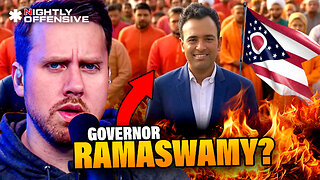 LIVE
LIVE
Slightly Offensive
1 hour agoGOV. RAMASWAMY? Vivek to import 1 BILLION INDIANS to OHIO | Nightly Offensive
777 watching -
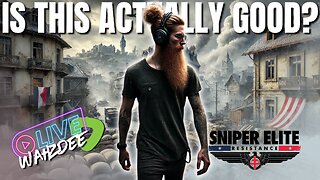
Wahzdee
5 hours agoSniper Elite Then Extraction Games—No Rage Challenge! 🎮🔥 - Tuesday Solos
33.3K -
 2:12:58
2:12:58
Robert Gouveia
4 hours agoSenator's Wife EXPOSED! Special Counsel ATTACKS; AP News BLOWN OUT
46.9K28 -
 55:07
55:07
LFA TV
1 day agoDefending the Indefensible | TRUMPET DAILY 2.25.25 7PM
16.5K12 -
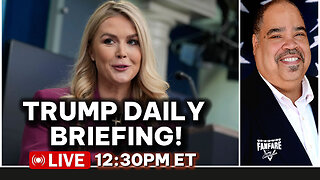 6:09:26
6:09:26
Barry Cunningham
10 hours agoTRUMP DAILY BRIEFING - WATCH WHITE HOUSE PRESS CONFERENCE LIVE! EXECUTIVE ORDERS AND MORE!
61.6K40 -
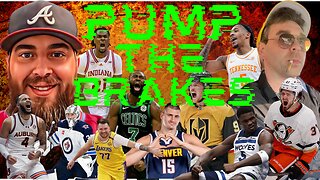 1:46:37
1:46:37
Game On!
5 hours ago $2.94 earnedPUMP THE BRAKES! Checking Today's Sports Betting Lines!
29.5K1 -
 1:27:21
1:27:21
Redacted News
5 hours agoBREAKING! SOMETHING BIG IS HAPPENING AT THE CIA AND FBI RIGHT NOW, AS KASH PATEL CLEANS HOUSE
159K195 -
 1:08:28
1:08:28
In The Litter Box w/ Jewels & Catturd
1 day agoCrenshaw Threatens Tucker | In the Litter Box w/ Jewels & Catturd – Ep. 749 – 2/25/2025
93.9K47 -
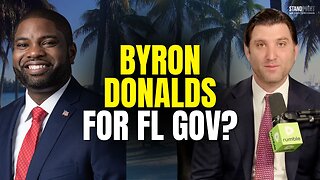 44:57
44:57
Standpoint with Gabe Groisman
1 day agoWill Byron Donalds Run for Florida Governor? With Congressman Byron Donalds
46.4K7 -
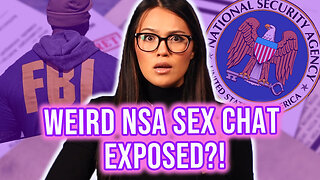 1:06:25
1:06:25
Savanah Hernandez
4 hours agoEXPOSED: FBI destroys evidence as NSA’s LGBTQ sex chats get leaked?!
69.8K23